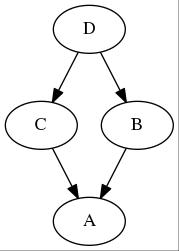从此开始进入模板与泛型编程,这也是一般C++程序员较少接触的部分。如果读者有使用C++里的标准模板库(Standard Template Librarry,STL)的话,能够多多少少地体会到模板的威力。
正如书上所说,这里的内容不能让读者成为专家级的template程序员,但可以让读者成为一个比较好的template程序员。笔者认为这里的意思是介绍一些模板编程的基本知识,例如更好地使用STL,或者进行一些简单的模板编程。因为一些更加进阶的玩法,例如在编译器利用模板编程完成某些运算等这些内容,要对模板元编程(Template Metaprogramming)十分熟悉,这要求编程人员对C++的语法特性十分了解,甚至要对准备编译源文件的编译器十分了解。
笔者自上个主题后期开始的条款就呈现出经验不足,对条款的解释能力开始下降,总结一下无非自己的编程经历也只能理解到书的前半部分,后面部分笔者仍然任重而道远。笔者在剩下的部分里尽自己最大的能力,不足的地方请多指教。
条款41:了解隐式接口和编译期多态 有关C++模板编程的原理,读者们可以读《C++ Template》这本书了解。在开始介绍条款之前,读者们首先要了解模板是怎么编译的,例如:
1 2 3 4 5 6 7 8 template <typename T>class List { public : T operator [](int idx) const ; ... };
在编程中,这个类模板被使用了:
在编译期,template是不会被编译的,而是先产生一个模板类:
1 2 3 4 5 6 7 class List { public : int operator [](int idx) const ; ... };
然后编译器才会去编译这个类模板的实例。介绍这个原理的意义在于要说明,在类模板有实例之前,类模板里面有什么内容,编译器是不会理会的,例如:
1 2 3 4 5 6 7 8 9 template <typename T>class Container { public : void fun (const T& obj) { obj.call (); } };
如果来了一个Container<float>,可想而知,当然是报错的。编译器也不会对类模板以及模板类有太多的检查,只要产生出来的模板类有符合模板类里面有的行为即可。笔者仿照书上的例子来说明结合隐式类型转换,模板编程会变得多困难:
1 2 3 4 5 6 7 8 9 10 11 12 13 14 15 16 17 18 19 20 21 22 23 24 25 26 27 28 29 30 31 32 33 34 35 36 37 38 39 40 41 class A { public : operator int () () { return 33 ; } }; class B { public : A& size () { return a; } private : A a; }; template <typename T>void fun (T& obj) if (obj.size () > 10 ) { cout << "Greater than 10." << endl; } else { cout << "Less than 10" << endl; } } int main (int argc, char * argv) B b; fun (b); return 0 ; }
看到输出:
也就是说,fun里面,B的实例是符合有size函数这个约束的,而B::size()返回的A类型不能与int直接比较,而是调用了A::operator int()作了隐式转换之后比较。
这个例子要说明的是,模板推断的双面性,一方面类型推断的能力为编程人员带来了遍历,可以少写一些类型转换等语句,也就是语法糖吧;坏处就是推断太强大了,以至于做了隐式转换可能产生非预期的结果。
而这个推断是基于有效表达式的。这也是书上要介绍的编译期多态,也就是在编译器决议出用什么版本的函数。
条款42:了解typename的双重意义 在声明模板的时候:
1 2 3 template <typename T>class Container {...};
与:
1 2 3 template <class T >class Container {...};
里的typename和class是等价的关键字,但是在用到某个类模板里的内置类型时,例如:
1 std::vector<Object>::iterator iter;
然而有可能在编译过程中,编译器可能认为std::vector<Object>::iterator是vector里面的一个成员变量,而真实情况是vector里面的一个嵌套从属类型,编译器有可能会报错。这时改成:
1 typename std::vector<Object>::iterator iter;
问题解决,这时候的typename是不能用class关键字代替的,这里的typename声明std::vector<Object>::iterator是一个类型,而不是某种实例变量。
条款43:学习处理模板化基类内的名称 该条款涉及到:
笔者反复看这个条款,最后也完全理解这个条款想讲的是什么。但是推断应该是与类设计相关的问题。引用书上的例子:
1 2 3 4 5 6 7 8 9 10 11 12 13 14 15 16 17 18 19 20 21 22 23 24 25 26 27 28 29 30 31 32 33 34 35 36 37 38 39 40 41 42 43 class CompanyA { public : void sendCleartext (const std::string& msg) void sendEncryted (const std::string& msg) ... }; class CompanyB { public : void sendCleartext (const std::string& msg) void sendEncryted (const std::string& msg) ... }; ... class MsgInfo {...}; template <typename Company>class MsgSender { public : ... void sendClear (const MsgInfo& info) { std::string msg; Company c; c.sendCleartext (msg); } void sendSecret (const MsgInfo& info) { std::string msg; Company c; c.sendEncryted (msg); } };
接着为了让发送消息有日志,编写一个可以记日志的LoggingMsgSender:
1 2 3 4 5 6 7 8 9 10 11 12 13 template <typename Company>class LoggingMsgSender : public MsgSender<Company>{ public : ... void sendClearMsg (const MsgInfo& info) { ... sendClear (info); ... } ... };
问题的根源在于,当编译器处理class template LoggingMsgSender定义式时,首先要知道MsgSender的定义式,但是MsgSender是一个模板,也就是说需要一个MsgSender<Company>的实例的定义式。而MsgSender有可能有特化的版本,特化的版本与一般的模板又不一样,如:
1 2 3 4 5 6 7 8 9 10 11 12 13 14 15 16 17 class CompanyZ { public : ... void sendEncryted (const std::string& msg) ... }; template <> class MsgSender <CompanyZ>{ public : ... void sendSecret (const MsgInfo& info) {...}};
这个时候,LoggingMsgSender:
1 2 3 4 5 6 7 8 9 10 11 12 13 template <typename Company>class LoggingMsgSender : public MsgSender<Company>{ public : ... void sendClearMsg (const MsgInfo& info) { ... sendClear (info); ... } ... };
因为MsgSender有可能存在全特化的版本,因而编译器不会去处理基类相关的内容。
为了能够正常编译代码,有三个办法(假设所有的Company行为一致,不会像CompanyZ有与众不同的行为):
用this关键字1 2 3 4 5 6 7 8 9 10 11 12 13 template <typename Company>class LoggingMsgSender : public MsgSender<Company>{ public : ... void sendClearMsg (const MsgInfo& info) { ... this ->sendClear (info); ... } ... };
用using声明式:1 2 3 4 5 6 7 8 9 10 11 12 13 14 template <typename Company>class LoggingMsgSender : public MsgSender<Company>{ public : using MsgSender<Company>::sendClear; ... void sendClearMsg (const MsgInfo& info) { ... sendClear (info); ... } ... };
显式指出函数的版本:1 2 3 4 5 6 7 8 9 10 11 12 13 template <typename Company>class LoggingMsgSender : public MsgSender<Company>{ public : ... void sendClearMsg (const MsgInfo& info) { ... MsgSender<Company>::sendClear (info); ... } ... };
virtual函数的多态行为失效。
还有,如果采用了解决方案之后,还出现LoggingMsgSender<CompanyZ>的实例化,编译当然就失败了。
条款44:将与参数无关的代码抽离templates 该条款第一个提到的问题是非参数类型带来的代码膨胀,template支持如下的语法:
1 2 3 template <typename T, std::size_t size> class SquareMatrix {...};
在写下:
1 2 3 4 5 SquareMatrix<int , 3 > m1; SquareMatrix<int , 4 > m2; ...
编译器会为SquareMatrix<int, 3>以及SquareMatrix<int, 4>模板类各自生成实例,可能产生如下的代码:
1 2 3 4 5 6 7 8 9 10 11 class I3SquareMatrix { public : ... }; class I4SquareMatrix { public : ... };
当需要产生很多大小不一的方阵实例的时候,类模板的实例代码随之膨胀。然而仅仅只是因为尺寸的问题就带来代码膨胀,这是不必要的。通过成员变量一般可以解决问题:
1 2 3 4 5 6 7 8 9 10 11 template <typename T>class SquareMatrix { public : ... private : ... std::size_t matrix_size; T* data_ptr; ... };
这样就解决了来自于非参数类型导致的代码膨胀。
而对于来自与类型参数的代码膨胀,一般不需要处理,要么就要有高超的编程技巧。例如SquareMatrix<int>、SquareMatrix<const int>和SquareMatrix<long>明明在二进制表示上一致(一般平台int和long一样),但是编译器会分别为它们生成不同的类模板实例。往往这样做的话需要用到void*类型来操作一些手法,这个就是很底层的代码的问题了,而且STL大部分容器是做了这个优化的,因而笔者认为该部分大多数人了解即可。
条款45:运用成员函数模板接受所有兼容类型 书上用了智能指针来作说明,如下一个继承体系:
1 2 3 4 5 class Top {...};class Middle : public Top {...};class Bottom : public Middle {...};
第一版的智能指针类定义:
1 2 3 4 5 6 7 template <typename T>class SmartPtr { public : explicit SmartPtr (T* ptr) ... };
原生的继承体系,用父类的指针指向子类实例:
1 2 3 Top* top1 = new Middle; Top* top2 = new Bottom;
都没有任何问题,但是:
1 2 3 4 5 6 7 8 9 10 void fun (SmartPtr<Top> top) } ... SmartPtr<Middle> middlePtr (new Middle) ; fun (middlePtr);
但是问题就出现在这里了,原生的继承体系Top<-Middle<-Bottom是没有问题的,一般的编译器会为上面的使用生成如下的类模板实例:
1 2 3 4 5 6 7 8 9 10 11 12 13 14 class TopSmartPtr { public : explicit TopSmartPtr (Top* ptr) ... }; class MiddleSmartPtr { public : explicit MiddleSmartPtr (Middle* ptr) ... };
注意并不是:
1 2 class MiddleSmartPtr : public TopSmartPtr{...};
也就是说SmartPtr<Middle>与SmartPtr<Top>没有任何关系,目前也没有代码提供它们之间的显式或者隐式类型转换,自然编译不能通过了。
为了解决这个问题,让SmartPtr<Top> top(SmartPtr<Middle>(new Middle))这类的语法能够正常工作,SmartPtr的类定义则应该这么写:
1 2 3 4 5 6 7 8 9 10 11 template <typname T>class SmartPtr { public : template <typename U> explicit SmartPtr (U* instance) ; template <typename U> SmartPtr& operator =(const SmartPtr<U>& sptr); ... };
更具体的设计可以查看std::shared_ptr的源码,在这里要提示一点,在写下上面的成员函数的定义时,应该是:
1 2 3 4 5 6 template <typename T> template <typename U> SmartPtr<T>& operator =(const SmartPtr<U>& sptr) { ... }
而不能写成不能通过的:
1 2 3 4 5 template <typename T, typename U>SmartPtr<T>& operator =(const SmartPtr<U>& sptr) { ... }
这样就解决了泛化的问题。
条款46:需要类型转换时请为模板定义非成员函数 问题类似与条款24,不同的是这次加入了模板,假设有个有理数的类模板:
1 2 3 4 5 6 7 8 9 10 11 12 13 template <typename T>class Rational { public : Rational (const T& numerator = 0 , const T& denominator); const T numerator () const const T denominator () const ... }; template <typename T>const Rational<T> operator *(const Rational<T>& lhs, const Rational<T>& rhs){...}
根据常理,有理数直接的操作:
1 2 3 Rational<int > oneHalf (1 , 2 ) ;Rational result = oneHalf * 2 ;
应该是没问题的,但是在强类型语言中,编译器试图寻找匹配的函数,但是目前也只能匹配到:
1 2 template <typename T>const Rational<T> operator *(const Rational<T>& lhs, const Rational<T>& rhs)
显然根据地一个参数,Rational<int>被推导出来了,然而template实参推导过程不会考虑通过构造函数而发生的隐式类型转换。在编程人员尚未提供规则使得int可以向const Rational<int>转换,在产生模板函数过程自然推导失败了。
书上提供的解决方法:
1 2 3 4 5 6 7 8 9 10 11 12 template <typename T>class Rational { public : ... friend const Rational operator *(const Rational& lhs, const Rational& rhs); }; template <typename T>const Rational<T> operator *(const Rational& lhs, const Rational& rhs){...}
这样做的原理是让编译器在产生Rational<int>类模板实例时,带上友元函数一起产生,使其省略上一个版本让编译器先为operator*推导的步骤,然后迫使oneHalf * 2套用函数时,对int强制做隐式类型转换。
编译通过,但是会链接失败,神奇的是,把operator*的定义放回类内部又可以了:
1 2 3 4 5 6 7 8 9 10 template <typename T>class Rational { public : ... friend const Rational operator *(const Rational& lhs, const Rational& rhs) { ... } };
friend关键字原本是用于让类外部的函数,或者类,可以访问私有成员,但是这里并没有这样的使用。
当类模板相关的函数需要隐式类型转换的时候,将函数定义为类模板内部的friend函数。
条款47:请使用traits classes表现类型信息 这个条款对于写轮子的人来说比较有用,STL用的人应该不少,但是阅读过STL源码的人可能不多,连笔者至今也没有系统读过C++ STL的源码,而STL中才会有大量涉及traits classes代码。
Traits并不是C++关键字或者一个预先定义好的构建:它们是一种技术,也是一个C++程序员共同遵守的协议。
因为模板编程的初衷是将与类型无关的操作提取出来,减少代码的重复性。不从实现角度来讨论,在该条款里面,模板编程表现得像接口一样,引用书上advance函数的例子:
1 2 3 4 5 6 7 8 9 10 11 12 13 14 15 template <typename IterT, typename DistT>void advance (IterT& iter, DistT d) if (iter是一个随机访问的迭代器) { iter += d; } else { if (d >= 0 ){while (d--) ++iter;} else {while (d++) --iter;} } }
在advance例子里面,if分支里面的描述用到的就是输入的迭代器的Traits信息,假设迭代器的遵循Traits协议:
1 2 3 4 5 6 7 8 9 10 11 12 13 14 15 template <typename IterT>struct IteratorTraits { const static bool is_random_access = false ; ... }; ... template <> struct IteratorTraits <RandomAccessIterator> { const static bool is_random_access = true ; ... };
有了类似这样的实现,那么上面的advance例子的判断语句可以具体为:
1 if (IterT::is_random_access)
这时的advance就像是一个接口,你只需要输入兼容的迭代器即可,无需关心该迭代器的特性会影响如何完成这个操作。
笔者前面的模拟实现是需要运行时的判断,而模板元编程强大之处,也是设计思想,尽可能地在编译期完成计算,提高运行时的效率。那么Traits应该改成较为合理的形式(参考STL):
1 2 3 4 5 6 7 8 9 10 11 12 13 14 15 16 17 18 19 template <...> class deque { public : class iterator { typedef random_access_iterator_tag iterator_category; ... }; ... }; template <typename IterT>struct iterator_traits { typedef typename IterT::iterator_category iterator_category; ... };
可以根据STL的设计,提供一个运行时的判断:
1 2 3 4 5 6 7 8 template <typename IterT, typename DistT>void advance (IterT& iter, DistT d) if (typeid (typename std::iterator_traits<IterT>::iterator_category) == typeid (std::random_access_iterator_tag)) ... }
为了优化运行时,同时不改变接口的情况下,这时候advance更像一个接口了:
1 2 3 4 5 6 7 8 template <typename IterT, typename DistT>void doAdvance (IterT iter, DistT d, std::random_access_iterator_tag) iter += d; } ...
这时的advance仅仅是单纯转发(forwarding):
1 2 3 4 5 6 7 8 template <typename IterT, typename DistT>void advance (IterT iter, DistT d,) doAdvance (iter, d, typename std::iterator_traits<IterT>::iterator_category) ); }
以上介绍了Traits Classes的基本原理和实现。
条款48:认识template元编程 模板元编程(Template Metaprogramming,TMP)是在编译期将运算完成,以此减少在运行时的运算,但是滥用模板也会导致代码膨胀。更多的详细介绍
在给出例子之前首先说明模板元编程里面的循环是用递归进行模拟的,读者也可以回想到模板里面没有直接支持模板循环的语法。
来一个阶乘计算的例子:
1 2 3 4 5 6 7 8 9 10 11 template <unsigned n>struct Factorial { enum { value = n * Factorial<n-1 >::value }; }; template <>struct Factorial <0 > { enum { value = 1 }; };
然后写下:
1 2 cout << Factorial<5 >::value << endl; cout << Factorial<10 >::value << endl;
即可得到结果,当然TMP可以做更多的事情,但是也很考验程序员的设计能力。要是这么简单的话,TMP早就因其强大的编译期优化而流行了。
因此该条款也只是简单地介绍TMP,有兴趣的读者可以在网上搜索到更多的TMP奇淫技巧。

